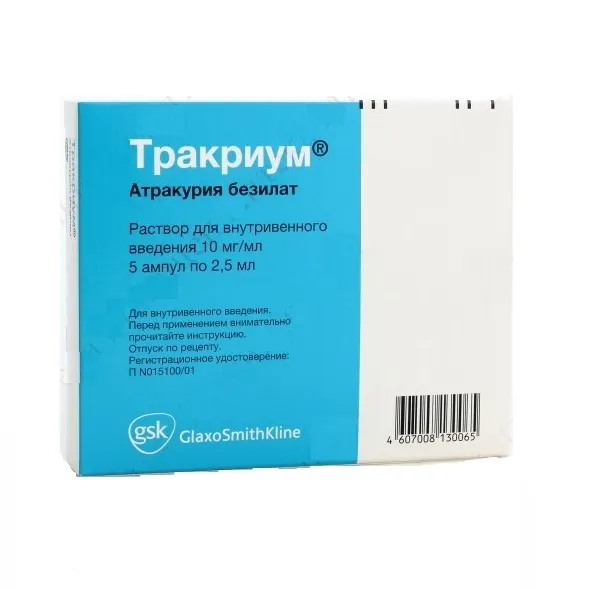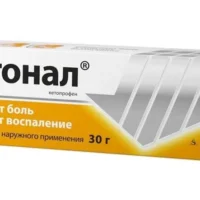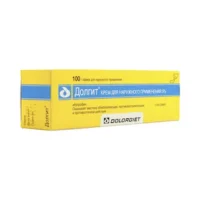Description
Tracrium (atracurium besylate) Solution for Injections 10 mg/ml. 2.5 ml Vials №5
Ingredients:
- Each 2.5 ml vial contains 25 mg of atracurium besylate as the active ingredient.
Dosage:
- The dosage of Tracrium should be individualized based on the patient’s weight, age, and medical condition.
- It is typically administered intravenously as a bolus dose followed by a continuous infusion.
Indications:
- Tracrium is indicated for use as an adjunct to general anesthesia to facilitate endotracheal intubation and provide skeletal muscle relaxation during surgery or mechanical ventilation.
Contraindications:
- Tracrium is contraindicated in patients with a known hypersensitivity to atracurium besylate or any of the ingredients in the formulation.
- It should also be used with caution in patients with neuromuscular diseases.
Directions:
- Tracrium should only be administered by trained healthcare professionals in a controlled clinical setting.
- The injection should be given slowly over a period of 30-60 seconds.
Scientific Evidence:
- Tracrium (atracurium besylate) has been extensively studied in clinical trials to evaluate its efficacy and safety in providing muscle relaxation during surgical procedures.
- Research has shown that Tracrium is a reliable neuromuscular blocking agent with a rapid onset of action and predictable duration of effect.
- Studies have also demonstrated its effectiveness in facilitating endotracheal intubation and improving surgical conditions by providing optimal muscle relaxation.
Additional Information:
- In comparative studies, Tracrium has shown similar efficacy to other neuromuscular blocking agents such as vecuronium and rocuronium.
- Its unique pharmacokinetic profile, including rapid metabolism by Hofmann elimination, makes it a preferred choice in certain clinical scenarios.
- Healthcare providers should be aware of the dosing guidelines and potential side effects associated with Tracrium to ensure safe and effective use in patients undergoing surgery or mechanical ventilation.
Tracrium acts by competitively binding to the nicotinic acetylcholine receptors at the motor endplate, thereby blocking the transmission of nerve impulses to the muscle and causing muscle relaxation. This pharmacological action is reversible with the administration of acetylcholinesterase inhibitors such as neostigmine.
Clinical trials have shown that Tracrium has a rapid onset of action, reaching maximum neuromuscular blockade within 2-3 minutes of administration. Its intermediate duration of action allows for precise control of muscle relaxation during surgical procedures, reducing the risk of postoperative residual paralysis.





